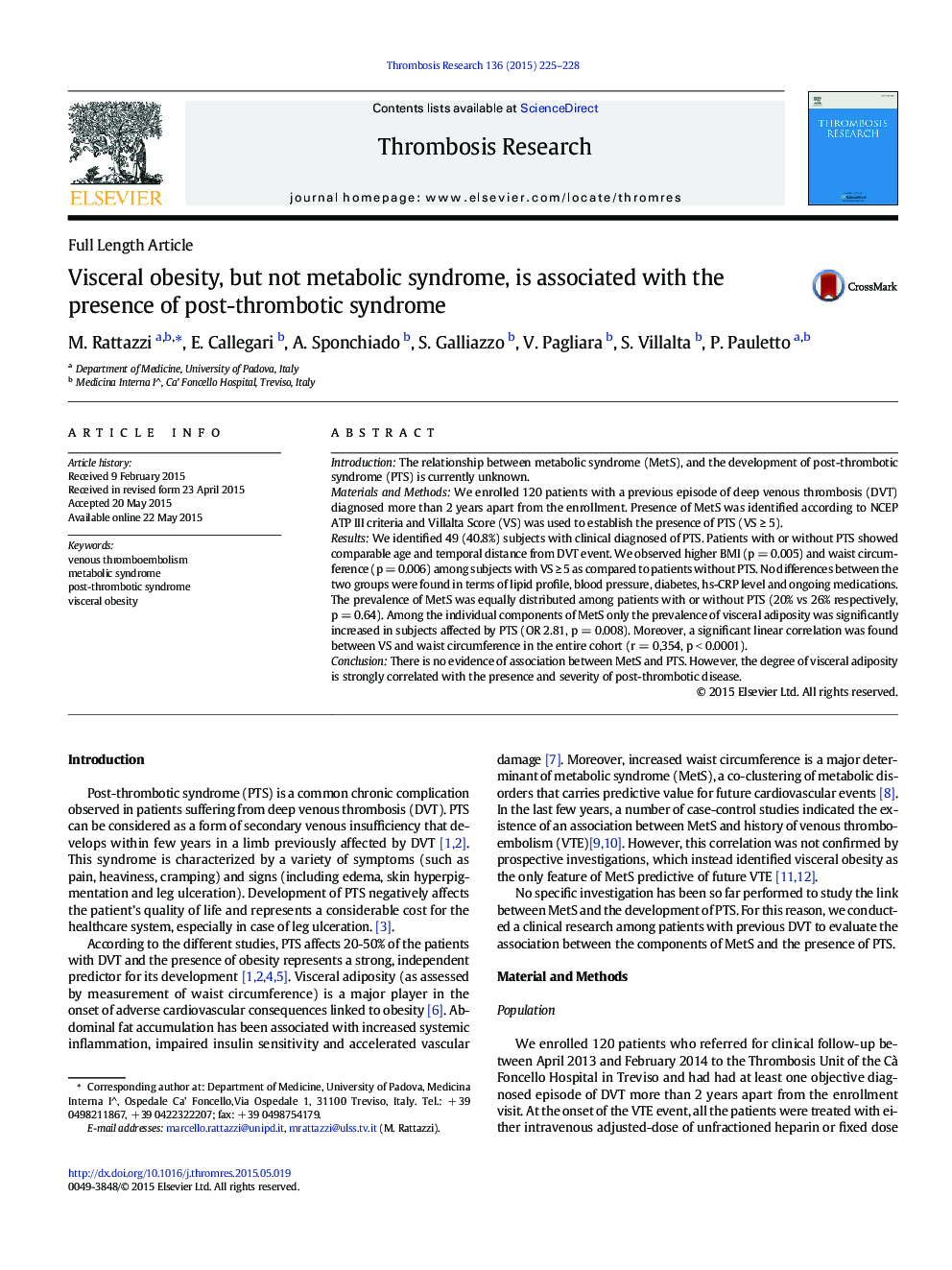| Article ID | Journal | Published Year | Pages | File Type |
|---|---|---|---|---|
| 6001284 | Thrombosis Research | 2015 | 4 Pages |
â¢Metabolic syndrome is not associated with the presence of PTS;â¢The degree of visceral obesity is directly correlated with PTS severity;â¢Presence of PTS is not associated with atherogenic dyslipidemia.
IntroductionThe relationship between metabolic syndrome (MetS), and the development of post-thrombotic syndrome (PTS) is currently unknown.Materials and MethodsWe enrolled 120 patients with a previous episode of deep venous thrombosis (DVT) diagnosed more than 2 years apart from the enrollment. Presence of MetS was identified according to NCEP ATP III criteria and Villalta Score (VS) was used to establish the presence of PTS (VS â¥Â 5).ResultsWe identified 49 (40.8%) subjects with clinical diagnosed of PTS. Patients with or without PTS showed comparable age and temporal distance from DVT event. We observed higher BMI (p = 0.005) and waist circumference (p = 0.006) among subjects with VS â¥Â 5 as compared to patients without PTS. No differences between the two groups were found in terms of lipid profile, blood pressure, diabetes, hs-CRP level and ongoing medications. The prevalence of MetS was equally distributed among patients with or without PTS (20% vs 26% respectively, p = 0.64). Among the individual components of MetS only the prevalence of visceral adiposity was significantly increased in subjects affected by PTS (OR 2.81, p = 0.008). Moreover, a significant linear correlation was found between VS and waist circumference in the entire cohort (r = 0,354, p < 0.0001).ConclusionThere is no evidence of association between MetS and PTS. However, the degree of visceral adiposity is strongly correlated with the presence and severity of post-thrombotic disease.
